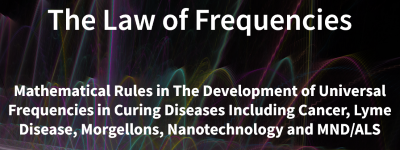Why do wildfires make people sick?
Fri 9:07 am +00:00, 14 Feb 2025Wildfire Toxicity
Whenever a wildfire (or another event that releases a significant amount of aerial toxicity, such as the Twin Towers collapsing on 9/111) occurs, we regularly see a significant number of people develop long-term illnesses from inhaling that smoke. Furthermore, individuals who already have sensitivities (e.g., from chronic inflammatory diseases) tend to become significantly worse after these events happen. Because of this, I typically advise doing one or more of the following:
- Leave the area until the fire is over.
- Try to stay inside.
- Wear an N-95 mask or respirator while outside.
- Consider getting a filter for your house (e.g., a decent HEPA filter) that can filter out the smoke particles.
Note: In the days after 9/11, first responders were deceptively told the air was “safe.” Many who breathed it became severely ill (e.g., over 63,500 registered a 9/11 illness, roughly 10,000 developed cancer and over 2,000 died), and are still struggling to get medical or financial support over 20 years later.2,3,4,5
Sensitive Patients
One of the biggest problems of our current age (and RFK Jr.’s reason for running for president) has been an “unexplained” explosion of chronic illness — particularly autoimmune, psychiatric, and neurological disorders (e.g., over half of Americans now have a chronic illness6).
However, because these illnesses have primarily resulted from modern technologies that diminish human vitality, there has been immense resistance to acknowledging them (as doing so would threaten all of the markets for those technologies).
Since individual susceptibility to an environmental toxin varies greatly, the most sensitive members of society tend to be the ones who initially develop these illnesses (and are the ones who suffer the most severe injuries from toxic pharmaceuticals).
As such, there is a large portion of “sensitive” patients (discussed here) living with debilitating chronic inflammatory illnesses (e.g., mold toxicity, Lyme disease, fibromyalgia, and chronic fatigue) who are misunderstood and largely neglected by the medical system.
In turn, many of us believe this neglect to be incredibly shortsighted as they represent the “canaries in the coal mine” who can warn us about the grave dangers of our modern environment and provide pivotal insights on how to treat these challenging diseases (e.g., the lessons I learned from them were directly applicable to COVID-19 vaccine injuries).
Note: The two best frameworks I have found to account for the myriad of challenging symptoms these patients face are an unresolved “cell danger response” and fluid obstructions throughout the body (e.g., blood clots) triggered by an impaired physiologic zeta potential — both of which amongst other things can be caused by vaccination.
From these patients, we’ve learned chronic inflammatory illnesses often develop or dramatically worsen once a person surpasses their toxicity threshold (which is often caused by factors like impaired circulation or detoxification), and once this threshold is crossed, it becomes much harder to reverse the damage.
Wildfire smoke, for example, exacerbates existing circulatory disorders and inflammatory conditions, often triggering flare-ups and periods of prolonged debility for sensitive patients with these illnesses, but also can be “the straw that broke the camel’s back”7 and trigger these illnesses.
Note: This entire situation is analogous to one of the most common side effects of the COVID-19 vaccines: either a new autoimmune disorder or a worsening of a pre-existing condition. To illustrate — an Israeli study found that 24.2%8 of those receiving a booster developed an exacerbation of a pre-existing autoimmune condition.
Save This Article for Later – Get the PDF Now
Wildfire Illness
From working with patients who were adversely affected by wildfires, we’ve seen that:
- Early treatment and avoiding smoke exposure can reduce long-term health impacts (especially for those who are already on the verge of a chronic illness).
- In younger individuals, wildfire smoke exposure will cause respiratory conditions like asthma or COPD to worsen (or onset if they were already on their way to developing them).
For older patients, the most significant issues were cognitive issues (e.g., my colleague had numerous patients receiving long-term treatment for their cognition who became significantly worse after the systemic inflammation triggered by the wildfires). Heart attacks and strokes could also occur in those predisposed to them.
Note: There is quite a bit of research showing particulate exposure (e.g., from pollution) causes cognitive impairment in all ages and accelerates the progression toward Alzheimer’s.9,10,11,12
The Consequences of a Wildfire
After the deeply traumatic Lahaina fire occurred in 2023, Hawaii decided to comprehensively study the health effects on the survivors (which is fairly unusual).13 This unique dataset, in turn, provides some helpful insights into what those in Los Angeles may experience in the coming years. That study found14 that six months after the fires:
| Only 24% of the participants remain in their pre-wildfire homes, 65%, are in temporary homes (e.g., hotels), and 11% have moved to new permanent homes. |
| 58% lost their jobs, 24% are still jobless and searching, and 74% reported a drop in their household income. Additionally, 35% of households reported difficulties having enough food for the family (compared to a baseline of 20.5% to 23.7%). |
| 49% said their health is now worse than it was prior to the wildfires, 24% reported that they do not have steady access to medical care, and 13% reported not having health insurance (compared to 1.7% of Maui residents being uninsured in 2022). |
| Over 20% had elevated blood pressure, 8% to 18% of participants had blood work indicating compromised kidney function, and up to 74% of participants had signs of poor respiratory health (49% exhibited signs of mild to severe lung obstruction, and 33% had compromised lung function linked to impaired tissue oxygenation). Note: Lung injuries often follow wildfire smoke exposure, but this is the first time I’ve seen the extent of this problem quantified. Presently, I believe many of those issues result from the positively charged smoke particulates destroying the glutathione lining of the lungs,15 injuring the endothelium16 and impairing the physiologic zeta potential.17 |
| 55% reported depressive symptoms (compared to a baseline of 33%), with the rates increasing with age (e.g., depression was reported by 75% of those between 50 to 59 years old). Additionally, 34.6% reported low self-esteem (compared to a 13% to 14% baseline), and 1.3% reported suicidal thoughts compared to a 0.8% baseline). Finally, the majority of respondents reported anxiety, but no comparative baseline was provided. |
| The participants reported that they found community aid organizations to be more helpful than FEMA, state aid agencies, or county aid agencies. |
In the University of Hawaii’s most recent data release,18 they found that the majority of the fire survivors were still experiencing significant symptoms (associated with wildfire smoke exposure) at least once a month and that the majority (60.4%) had not received medical attention for their symptoms.

Note: A few months later (in a subsequent update of the report) the physical health outcomes stayed the same, but the mental ones worsened (e.g., 30% of participants reported symptoms of moderate or severe anxiety, and 4.4% had suicidal thoughts).19 Likewise, years after, many are still struggling with finding housing (with many families simply leaving Hawaii).20
Why Do Wildfires Make People Sick?
In addition to the immense stress created by having your home burn down, there are three models that explain why the smoke from wildfires makes patients ill.
•The Kendrick model — Malcolm Kendrick M.D.21 has made a convincing argument that heart disease arises from inflammatory or mechanical damage to the protective lining of the blood vessels. This is because blood clots form to patch that damage, and over time, those clots transform into the atherosclerotic plaques classically associated with heart disease. In the case of wildfires (and the particulates they release):
◦Particulate matter exposure (e.g., from car exhaust, air pollution, or cigarettes) damages the endothelium and is well known to increase cardiovascular disease and death.22,23,24 Coal miners with a high coal particulate exposure for example, are more than twice as likely to die from heart disease25 and in rats, coal dust inhalation has been found to cause atherosclerosis.26
◦Dense wildfire smoke exposure has been shown to increase ER visits amongst adults 65 and older by 42% for heart attacks and 22% for ischemic heart disease.27
•The Klinghardt model — Chronic illnesses often result from a mix of factors, including heavy metals, infections, and environmental stressors.
◦Dietrich Klinghardt has proposed that wildfires release heavy metals stored in trees (which are then inhaled), contributing to increased toxicity in already vulnerable individuals.
◦Research confirms that wildfires release mercury and other toxins,28 adding to environmental stress, particularly in areas with past mining and during the hottest wildfires.29
◦Many toxic materials are released from combusted buildings (including now banned building materials like lead paint and asbestos, both of which cause significant health issues when inhaled).
•Negative ions and zeta potential — Zeta potential, the electrical charge influencing blood flow (discussed here), when negative, plays a pivotal role in sustaining health.30 Conversely, positive ions, including those from vaccines, pollution, and wildfire smoke, impair it, worsening illness.
◦Negative ions, however, enhance zeta potential, improving health and helping with conditions like breathing and burns.31
◦Chronic inflammatory conditions (e.g., those seen in complex patients) make individuals more susceptible to the effects of positive ions (e.g., from wildfire exposure).
◦Both tobacco smoke and positive ions slow the movement of the cilia (tiny beating hairlike structures), which the respiratory tract uses to clear particulate matter from it, while negative ions increase that movement.
In small animals, providing negative ions was found to counteract the effects of tobacco smoke, while providing positive ions concurrently was found to slow cilia movement 3 to 10 times as much as tobacco smoke alone.32
Treating Wildfire Injuries
There are a few approaches I and colleagues have observed to help wildfire injuries (the most important of which is to reduce your exposure to wildfire smoke as soon as possible). Some of the most helpful treatments for existing injuries we have found include:
•Utilize treatments that restore the physiologic zeta potential of the body.
Note: One aspect of restoring zeta potential is drinking deionized water (which also tends to be the most purified water available), and having a sufficient amount of that water is particularly important when addressing wildfire injuries.
•Intravenous vitamin C (when administered early, it greatly helps with wildfire-induced inflammation).
•Treatments directed at treating the underlying chronic inflammation in the patient (e.g., what existed before the wildfire smoke exposure).
•Nebulized glutathione.
•DMSO, as DMSO heals a variety of challenging lung disorders, it treats allergic lung conditions (e.g., asthma), improves circulation throughout the body (e.g., DMSO is very helpful for strokes) and effectively heals burn injuries. For example, after sheep experienced a lung injury from inhaling smoke, nebulized DMSO with heparin was found to significantly reduce lung damage to their lungs.33
Note: That broad swathe of uses highlights DMSO’s wide range of therapeutic properties (e.g., it is best known for its remarkable ability to treat chronic pain, arthritis and musculoskeletal injuries).
Pulmonary Glutathione
Glutathione, a powerful antioxidant, is one of the primary mechanisms the body uses to protect itself from toxins (e.g., heavy metals and free radicals) and is a commonly used therapeutic within integrative medicine for a variety of illnesses.
The lungs, in turn, depend upon glutathione to protect themselves from damage (along with maintaining the survival of the lung cells),34 and thus concentrate glutathione35 at the interface where oxygen in the airway enters the circulation.
This protective layer in turn, is consumed by injurious substances (e.g., cigarette smoke), and once it is depleted, future smoke exposures will significantly damage the lung tissue. As such, in chronic lung diseases, glutathione’s presence within the lung is diminished.36
Because of this, nebulized glutathione (which gets glutathione directly to that critical interface within the lungs) is one of the most useful therapies we have identified for treating wildfire injuries.
Chronic Obstructive Pulmonary Disease (COPD)
COPD is typically caused by particulate damage to the lungs (e.g., from smoking), and as such, nebulized glutathione (which protects the lungs) is also very helpful for COPD.37,38 Typically, we find it only halts the progression of the disease (presumably because it prevents more otherwise exposed lung tissue from being damaged by particulate matter). However, in some cases, it can create dramatic results (e.g., when used for a COPD exacerbation39).
This is extremely consequential as none of the existing pharmaceutical therapies for COPD (all of which have side effects) can halt its awful progression.
Note: The lack of awareness of using liposomal glutathione to treat COPD is both extraordinary and predictable as chronic diseases of the respiratory tract are the fourth most common cause of death in the United States, which makes them a vital monopoly to maintain (e.g., in the United States alone, 24 billion dollars was spent on COPD in 202340).
Conclusion
Much in the same way that those who are severely injured by a pharmaceutical product discover much to their horror that no safety net exists to help them, those who are devastated by a disaster are often left to fend for themselves (e.g., this applies to the situations in North Carolina and East Palestine).
Because of this, I believe it is critical to find the tools that can help you develop resilience in disaster situations, much like it is vital for us to be empowered to take care of our health.
Fortunately, because of the interconnected nature of our world, the solutions in one area tend to expand to other (e.g., as I showed here both nebulized glutathione and DMSO can be used for both disaster situations and chronic illnesses).
As such, if one continues to seek out the truth, they will often find the answers they seek where they least expected to, and it is my sincere belief the unfortunate circumstances we are repeatedly finding ourselves in are now making it possible to move beyond the dysfunctional paradigm we have been trapped in for decades.
Author’s Note: This is an abridged version of a longer article on the subject which discusses the gross malfeasance that caused both the LA and Maui fires in more detail and goes into more detail on the mechanisms and treatments particulate injuries and chronic lung diseases (e.g., COPD) such as nebulized DMSO. That article and its additional references can be read here.
A Note from Dr. Mercola About the Author
A Midwestern Doctor (AMD) is a board-certified physician from the Midwest and a longtime reader of Mercola.com. I appreciate AMD’s exceptional insight on a wide range of topics and am grateful to share it. I also respect AMD’s desire to remain anonymous since AMD is still on the front lines treating patients. To find more of AMD’s work, be sure to check out The Forgotten Side of Medicine on Substack.
What Wildfire Illness Can Teach Us About Treating COPD















